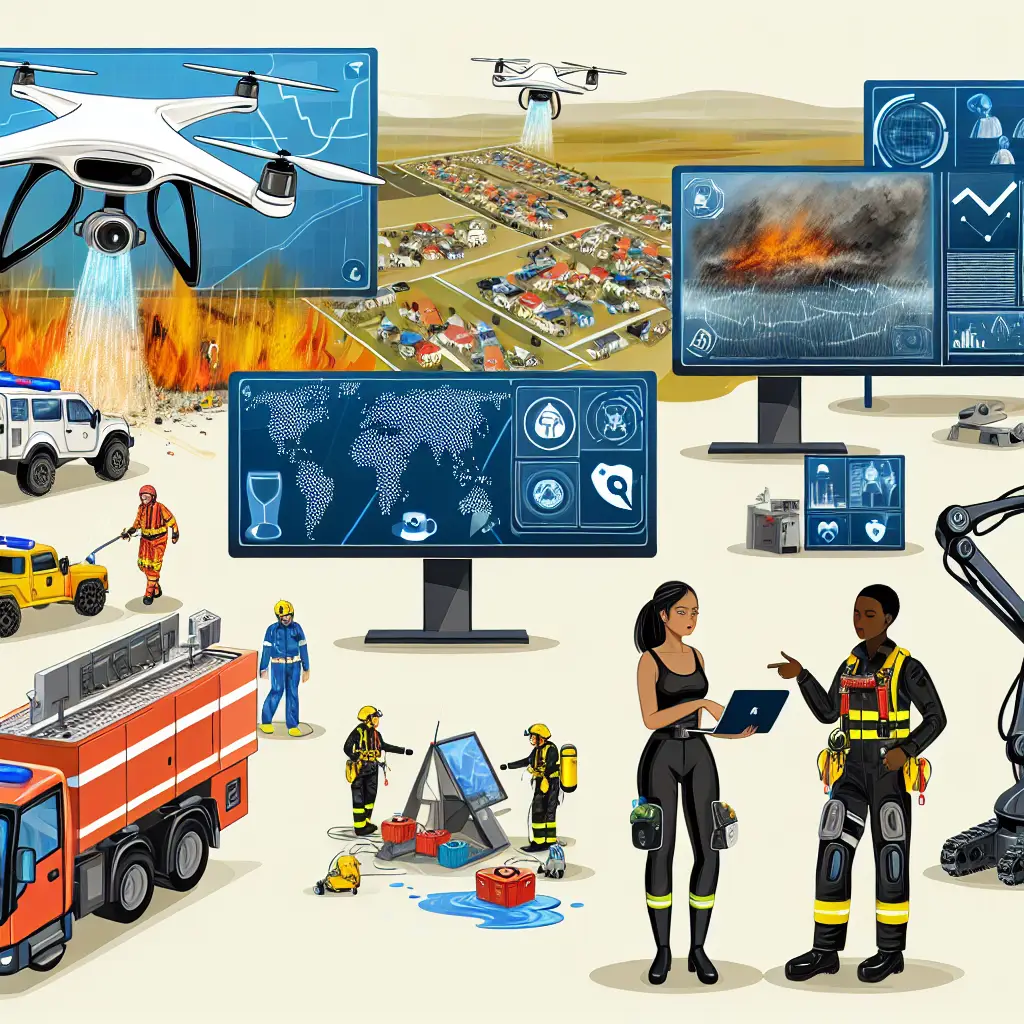
Harnessing AI for Enhanced Disaster Management: Integration of AI into Disaster Management
In today’s rapidly changing world, the increasing frequency and severity of natural disasters pose significant challenges. However, the advancement of Artificial Intelligence (AI) is opening up new opportunities to enhance disaster management strategies. This article explores the dynamic integration of AI into disaster management, its benefits, and potential applications.
Understanding Disaster Management
Disaster management involves a series of practices aimed at reducing the impact of natural and man-made disasters. Processes within disaster management typically include:
- Prevention and Mitigation
- Preparedness
- Response
- Recovery
Traditionally, these processes relied heavily on human expertise and historical data. However, as the complexity of disasters increases, so does the need for more sophisticated tools and techniques. Enter Artificial Intelligence.
How AI is Transforming Disaster Management
1. Predictive Analytics
AI-powered predictive analytics can significantly improve the prevention and mitigation aspects of disaster management. By analyzing vast amounts of data from various sources, AI can predict potential disasters with high accuracy. This capability helps governments and organizations to take preventive measures, thus saving lives and reducing economic losses.
2. Real-Time Data Processing
In the realm of disaster response, real-time data processing is crucial. AI systems can analyze data from satellites, weather stations, social media, and IoT devices in real time, providing actionable insights to responders. This can lead to more efficient evacuations, resource allocation, and critical decision-making during emergencies.
3. Automated Damage Assessment
Post-disaster recovery can be accelerated with the help of AI. Through image recognition and machine learning algorithms, AI can automatically assess the extent of damage caused by disasters. This enables faster insurance claims processing, reconstruction efforts, and overall recovery planning.
Key Benefits of AI in Disaster Management
1. Enhanced Early Warning Systems
AI can significantly enhance early warning systems by predicting disasters before they happen. For instance, AI models can analyze weather patterns, seismic activities, and other indicators to forecast hurricanes, earthquakes, and floods. These enhanced early warnings give communities more time to prepare and evacuate if needed.
2. Improved Coordination and Communication
AI can also streamline coordination between different agencies and organizations involved in disaster management. Chatbots and virtual assistants can facilitate real-time communication, ensuring accurate and timely information dissemination among all stakeholders.
3. Efficient Resource Allocation
During a disaster, efficient resource allocation can mean the difference between life and death. AI systems can analyze data to predict where resources are most needed, ensuring that humanitarian aid, medical supplies, and rescue operations are efficiently distributed.
4. Reducing Human Error
Human decision-making, especially under stress, is prone to errors. AI models, driven by data and algorithms, can help reduce human error in disaster management, leading to more precise and effective actions.
Real-World Applications of AI in Disaster Management
1. Predicting Natural Disasters
In Japan, AI systems are being used to predict devastating natural disasters like earthquakes and tsunamis. These systems analyze seismic data and historical patterns to provide accurate forecasts, helping mitigate the impact of such catastrophic events.
2. Flood Prediction and Response
In the US, AI models are being employed to predict floods by analyzing weather data, river levels, and topography. These systems can provide advance warnings, allowing timely evacuations and informed decision-making during floods.
3. Hurricane Tracking
Machine learning techniques are used to track hurricanes and predict their paths. This information is crucial for coastal communities to prepare for potential landfalls and minimize damage.
4. Wildfire Management
AI techniques, such as computer vision, are being used to detect wildfires in their early stages. Drones equipped with AI-driven sensors can identify fire hotspots and inform response teams immediately.
Challenges and Future Prospects
Data Privacy
While the integration of AI into disaster management has numerous benefits, it also comes with challenges. One major concern is data privacy. Collecting and processing large amounts of personal and geolocation data can lead to privacy violations if not managed properly.
Infrastructure and Investment
Another challenge is the need for substantial infrastructure and investment. Developing and deploying AI systems can be costly, requiring significant financial and technological resources, which may not be available in developing regions.
Future Prospects
Despite these challenges, the future prospects of AI in disaster management are incredibly promising. Continuous advancements in AI, combined with improved data availability and global collaboration, are likely to further enhance disaster preparedness, response, and recovery efforts on a global scale.
Conclusion
The integration of AI into disaster management is a powerful tool that can save lives, reduce economic losses, and enhance the overall resilience of communities worldwide. As AI technology continues to evolve, its potential to transform disaster management strategies will undoubtedly grow, providing a safer and more prepared world for future generations.









